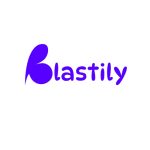Radio advertising in the United States remains one of the most effective ways to connect with audiences across different demographics. Despite the surge of digital platforms, studies show that over 82% of adults in the U.S. still tune into AM/FM radio weekly, making it a powerful channel for businesses looking to build brand awareness and drive sales. However, the effectiveness of your radio campaign is not just about being on air—it is about running your ad at the right time and choosing the right station.
Timing is everything when it comes to radio advertising. According to Nielsen data, the morning commute between 6 AM and 10 AM captures the highest listenership, with millions of Americans starting their day with radio. This window is particularly valuable for brands targeting working professionals or parents on school runs. Midday slots between 10 AM and 3 PM are ideal for reaching stay-at-home parents, remote workers, and retirees, while afternoon drive times between 3 PM and 7 PM again attract commuters and people winding down their day. Late evenings and weekends, though often overlooked, can be cost-effective options for small businesses targeting niche audiences with more flexible schedules. If you are curious about how radio advertising performs in other regions, you can check out insights on the best time to run radio ads in Nigeria for comparison.
Choosing the right station is equally as important as selecting the right time. With thousands of radio stations across the U.S., each with its own unique audience, it is critical to align your brand message with a station that matches your target demographic. For example, if your business caters to younger audiences, urban contemporary and pop stations may be ideal. For older, more established audiences, classic rock or news talk radio may work better. This is where data-driven targeting comes into play. Research shows that advertising effectiveness increases by nearly 60% when brands choose stations that align with their customer demographics.
An often-overlooked aspect of running radio ads in the U.S. is considering the geographical spread of stations. National brands may prefer larger syndicated networks that span multiple states, while small businesses often benefit more from local stations that dominate in their communities. By choosing wisely, you ensure that your advertising dollars are spent reaching the people most likely to engage with your product or service. This decision-making process is not unlike strategies used in the United Kingdom, where careful selection of stations greatly impacts campaign performance. For further context, you can take a look at the best time to run radio ads in the UK.
Doing business without advertising is like winking at someone in the dark. You know what you are doing, but nobody else does
As the saying goes, “Doing business without advertising is like winking at someone in the dark. You know what you are doing, but nobody else does.” This quote captures the essence of why choosing the right time and the right station matters. The U.S. radio landscape offers vast opportunities, but without thoughtful planning, your message may be lost in the noise. By aligning timing, audience demographics, and station selection, small businesses can create impactful campaigns that resonate with listeners and convert them into loyal customers.
Ready to get your brand heard across the US? Visit Blastily.com today to get started and take the guesswork out of radio advertising.



